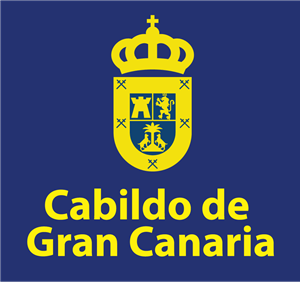
las palmas de gran canaria spain
ISFNT 15 will take place in the week September 10th – 15th, 2023 at the Auditorio Alfredo Kraus, in Las Palmas de Gran Canaria, Spain





ABOUT GRAN CANARIA
Gran Canaria is a spanish island surrounded by the Atlantic Ocean, with beautiful beaches and mountains, three thousand years ago extincted volcanoes and natural dunes.
Gran Canaria capital, Las Palmas, is a cosmopolitan city with a historic heart from the 15th century. It has an aboriginal past whose first settlers arrived from Africa probably in the first millennium before our era. It was incorporated into the crown of Castile in the 15th century, and in 16th century the mixture of cultures began due to the mixing of the indigenous population with the European colonizers.
After the discovery of the New World, thousands of islanders emigrated and settled in America. The trade in Canary Island sugar cane, wine and cochineal experienced a boom that later collapsed due to fierce competition, leading to a massive exodus at the end of the 19th century to Latin America.
Official tourism website of Gran Canaria:
ARCHEOLOGICAL HERITAGE:
Gran Canaria is dotted with interesting sites, where the heritage of the pre-Hispanic communities is preserved. To discover this ancient world, we recommend visiting the Canary Museum in the capital, the Museum and Archaeological Park of the Cueva Pintada, in Gáldar, and Cenobio de Valerón.
The Canary Museum is an exceptional immersion into the way of life of the “guanches”-the first Canary Islanders-whose culture disappeared with the Spanish conquest. This museum has the largest collection of Guanche objects as mummies, aboriginal ceramics, models of troglodyte caves, “pintaderas” (stamps for body painting), tools, etc.
http://www.elmuseocanario.com/en/home-2/
The Museum and Archaeological Park of the Cueva Pintada is the most important archaeological site of the Canary Archipelago both for its size and its scientific interest. It is a Guanche cave that houses the most unique and representative group of paintings of aboriginal art. It is recommended to reserve tickets. www.cuevapintada.org
The Cenobio de Valerón is a group of tiny artificial caves, a work of archaic engineering from more than 800 years ago. Its function was that of an aboriginal collective granary. www.cenobiodevaleron.com
CULTURAL AND MONUMENTAL HERITAGE
VEGUETA
Historic center of Las Palmas with narrow cobblestone streets, more than five hundred years old and varied architecture. Foundational nucleus of the city, declared a National Historic-Artistic Site in 1973. First Castilian site from which the conquest of the Canary Islands by the Crown of Castile began.
COLUMBUS HOUSE Las Palmas
Beautiful building of the 15th century that houses the museum dedicated to the discovery of America. There is no certainty, but it is very likely that Christopher Columbus stayed here in 1492 before embarking on the shortest way to the Indies and stumbled upon America. https://www.casadecolon.com
ST. ANNE’S CATHEDRAL, Las Palmas
Its construction began in the 15th century, it has an interesting gothic roof, a neoclassical façade added in the 19th century, two twin towers, a viewpoint from which you can see La Vegueta and a 17th century orange tree courtyard.
BEACHES
Gran Canaria has beautiful beaches, with a spring-like climate all year round and different from each other. They are of fine or golden sand, or dark sands, solitary and quiet coves, other urban and cosmopolitan, and other nudist beaches.
- MASPALOMAS BEACH
It is an incomparable place for sunbathing with the backdrop of the Maspalomas Dunes – 400 hectares of natural sand from the ocean – and a great variety of flora and fauna.
- LAS CANTERAS BEACH
It is the beach of the capital with two 2.8 km long, golden sand and crystal clear waters protected by a coral reef. It is one of the best urban beaches in Europe, ideal for swimming and surfing or snorkeling. At the end of its very atmospheric promenade is the Alfredo Krauss Auditorium.
- PLAYA DEL INGLÉS
Located near the beach of Maspalomas, of fine golden sand, it is a kilometric tongue of sand that extends for more than 3 km. It is one of the most crowded of the island.
- EL JUNCAL COVE
It is a secluded cove with exceptionally calm waters surrounded by imposing cliffs.
- THE COVE OF AGUADULCE
It is a small beach of 140 m of clear sand that is under the Guanche site of Tufia. It is quiet, easily accessible and usually deserted. It is perfect for diving.
- THE BEACH SAND MOUNTAIN
It is a strip of dark sand with no facilities, frequented by nudists and free of crowds.
NATURE
- TEJEDA
One of the most beautiful mountain villages of Gran Canaria and one of the oldest areas of the island. The rugged landscape is the result of millions of years of volcanic eruptions. A violent explosion sank the volcano and left a crater 18 km wide and erosion over 5 million years gave rise to the imposing caldera of Tejeda.
- ROQUE NUBLO
Roque Nublo is a rock that forms part of a volcanic chimney, visible from any inland enclave. It is a monolith of 80 m high, worshiped by the Guanches, ancient inhabitants of the island.
- TAMADABA
A secluded Canary Island pine forest where some rare endemic plants grow that are impossible to see anywhere else on the island.
- GUAYADEQUE RAVINE
The deep ravines are characteristic features of Gran Canaria but none is as impressive as Guayaveque, which in the Guanche language means “place of running water”.
In addition to great natural beauty, this fascinating territory has an important cultural heritage. Its flora and fauna are unique and the sparse local population lives in caves and struggles to maintain a way of life that has been lost in the rest of the island.
- TEROR
Town of exquisite Canarian architecture and with great historical and religious relevance. The urban center became part of the National Heritage in 1790.
ROUTES
CALDERA DE LOS MARTELES
It is 500 meters in diameter and 80 meters deep. We recommend the trail that borders the caldera.
CALDERA AND PICO DE BANDAMA
It is 900 meters in diameter and 250 meters deep. It owes its name to the Flemish merchant Daniel Van Damme who acquired the adjoining land in the 16th century for the cultivation of vines. It is close to the capital.
MONTAÑÓN NEGRO NATURAL MONUMENT
It is part of the protected landscape of Las Cumbres. The native pines stand out against the black and austere landscape of the volcano.
ROSIANA VOLCANOES FIELD
You can walk on lava and see volcanic cones originated in the quaternary everywhere. It is a gentle hike of 120 m of slope, with views of farmhouses and vegetation such as poppies and daisies.
https://www.lopesan.com/blog/consejos/descubre-la-ruta-de-volcanes-en-gran-canaria/ (spanish version)
GASTRONOMY
Typical Canarian products that you can find in Las Palmas de Gran Canaria are sea salt, tropical fruits, gofio de millo (a mixture of corn, barley or wheat served in many ways), fish, cheeses and wines, coffee from Agaete, almonds, marzipan and bienmesabe (sweet cream of almonds, honey and sugar).
Canarian specialties are papas arrugadas-wrinkled potatoes, small potatoes with skin and boiled in salted wáter-, canarian puchero, mojo rojo, gofio escalfado, eggs mole, watercress soup, rabbit in salmorejo, composite goat meat, ropa vieja (chickpea stew), tortillas de carnaval, trouts y fish broth.



SILVER SPONSORS


















